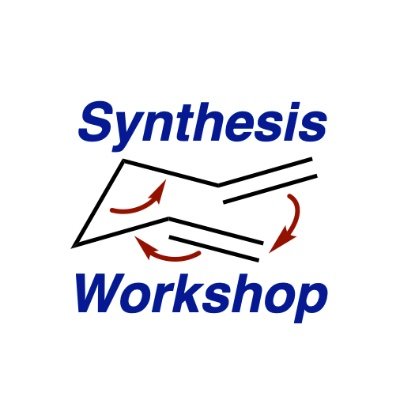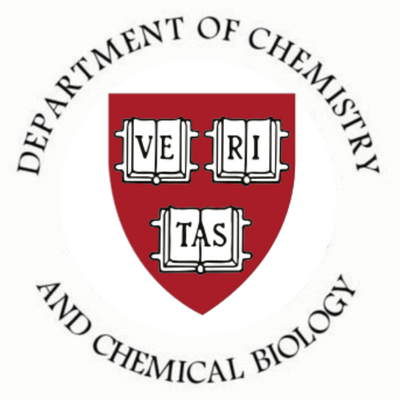
Richard Liu
@RichrdLiu
Followers
1K
Following
1K
Media
19
Statuses
105
assistant prof @HarvardCCB | formerly postdoc @SwagerGroup, PhD @BuchwildGroup | chemicals enthusiast
Cambridge, MA
Joined October 2017
Here's a fun photo of Michael capturing CO2 on the roof of Mallinckrodt labs in the Cambridge sunlight.
0
0
9
This work was led by Dr. Michael Purdy and Ariel Wang in our group. Congratulations! Critical spectroscopic & mechanistic insights were provided by our wonderful collaborators Dr. Matt Drummer and Prof. Dan Nocera - thank you for your contributions!
1
0
4
In @NatureChemistry, we report reversible hydroxide emitters that generate highly basic (pH ~13) solns under light & revert to neutral in dark. The compounds, taking advantage of aromaticity effects, can directly capture/concentrate CO2 from ambient air. https://t.co/hy7VUvgNIm
14
38
307
@Shangyu_Li @ChemRxiv With no added base, the conditions leave NH and OH untouched. It can be nice to have complementary approaches for making useful types of compounds 🔼🔽◀️▶️
0
0
3
Adding to the growing toolbox of aryl azide syntheses: From @Shangyu_Li on @ChemRxiv, Pd-catalyzed coupling of ArBr/ArOTf with NaN3. This reaction is trickier than it looks: as we show, [LPd-N3]2 dimers form with many L's & the pdt can inhibit Pd(0). https://t.co/w8Req4nD39
1
7
105
Our group reports a Ni-catalyzed desulfurative ring contraction method in @J_A_C_S. By performing double SNAr reactions and "deleting" the sulfur atom afterwards, many fun heterocycles can be synthesized in 2 steps from commercial materials. Congratulations, @chou15_johnson!
Ni-Catalyzed Reductive Ring Contraction via Desulfurative Cross-Coupling | Journal of the American Chemical Society @TotalSyntheses @Harvard @HarvardCCB
1
9
102
In Org. Lett. (@JOC_OL), Khash and Nathan report a simple, bench-stable, and recyclable organic reagent that quantitatively releases CO in solution upon blue-light irradiation. The method can be combined with carbonylative cross-coupling reactions. https://t.co/EaLMRBpGxv
4
17
91
The revised & formatted version now in @angew_chem! https://t.co/6LER3l0dPf Nathan, Dana, Breno expanded the study to show 10 examples of ArSFs (incl 2 crystal structures) & highlight the reactivity of this FG with alkenes, alkynes, and carbenes (uncatalyzed!) Happy New Year!
2
6
93
An expanded version of this work is now out in @J_A_C_S: https://t.co/T2AoMZhP8Q Many thanks to several fantastic reviewers who guided us to improve the study (incl discovery of a new ligand for less biased p-alkyl/aryl substrates). Happy Holidays!
pubs.acs.org
A fundamental property of cross-coupling reactions is regiospecificity, meaning that the site of bond formation is determined by the leaving group’s location on the electrophile. Typically, achieving...
The next chapter of our metal catalysis work is now on @ChemRxiv. We report that an unusual reversible Pd "ring-walking" process can be used to access unconventional isomers of cross-coupling products! https://t.co/4HySbByygh
0
17
160
This summer, our lab had the pleasure of having Mustafa M. from Brighton High School as a colleague. We appreciate your enthusiasm, humor, and contributions to our research! Thanks also to Amelia and Ariel for serving as mentors 🧪⚗️
1
1
56
How can design and synthesis overcome antibiotic resistance? Find out this week as Kelvin Wu (Myers group @HarvardCCB) shares his work on cresomysin recently published in @ScienceMagazine! Thanks to Reem for hosting/editing! https://t.co/D2XDrit8Kc Ref: https://t.co/15s6ynImGr
0
9
61
Aug is almost here, and the 2024 OM Bootcamp kicks off soon (Mon, Aug 12, 8 am PT) @ScrippsGradPrgm @scrippsresearch • hybrid format • open to all • 2-week short course • targeted to senior undergrads / early-stage grad students Learn more:
docs.google.com
1
10
59
Congratulations to @GabrielLovinger and Marcus Sak @msh_yi on their paper in @Nature! A HBD catalyst accelerates an SN2 pathway despite H-bonding to the nucleophile by preorganizing the ion pair into a reactive conformation, just like an enzyme would! https://t.co/hE12GPNyPw
nature.com
Nature - A small-molecule (646 Da) hydrogen-bond-donor catalyst accelerates the SN2 step of an enantioselective Michaelis–Arbuzov reaction by recapitulating the geometric preorganization...
4
28
194
Caging Bioactive Triarylimidazoles: An Approach to Create Visible Light-Activatable Drugs | Journal of the American Chemical Society @HokkaidoUni #Caging #Bioactive #Triarylimidazoles #VisibleLight #Activation #Drugs
pubs.acs.org
Imidazoles are crucial structural components in a variety of small-molecule inhibitors designed to target different kinases in anticancer treatment. However, the effectiveness of such inhibitors is...
1
11
61
Congratulations to Prof Eric Jacobsen @JacobsenLab on receiving the 2024 Welch Award! @WelchFoundation
https://t.co/48kaY7BkEi
#chemtwitter
welch1.org
4
5
100
This project was a team effort from Nathan Faialaga, Dana Gephart, and Breno Silva. Stay tuned for more ☕️
0
1
9
It was thought such compounds disproportionate (by 3 RSF 🔜 RSF3 + RSSF) too rapidly to be isolated, but we found a few surprisingly stable examples. These undergo regio-/stereoselective fluorination rxns (and the SAr can be used more/removed after).
1
0
4
Sharing some work on organic sulfenyl fluorides (R-S-F) in this preprint: https://t.co/YOx3KQW4Mx. R-SF3 and R-SF5 are well-known functional groups, so why do we never hear about their baby cousin R-SF? Would such a thing behave like R-SCl or R-SBr?
2
14
117
Virtual registration for Empowering Women in Organic Chemistry (EWOC) is open! Scan the QR code to register!
1
3
10
If you are a senior graduate student interested in a postdoc at @HarvardCCB, please consider our Future Leaders Program. I really enjoyed our symposium last year and encourage anyone interested in a fellowship to apply!
0
15
94











